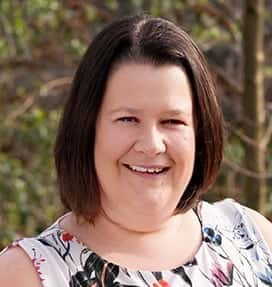NLP in Education: A story about how NLP was the difference that made the difference
Are you a teacher who wishes you had some way of keeping your students attention for longer? Maybe you are a parent that is concerned that your child has been labelled a poor speller? Perhaps you are involved in education in a broader sense, perhaps you run a kids club, pre-school nursery or teach a sport to kids – do you wonder what else you can change about the way you interact with the children to help them learn faster? Are you a lecturer at university or perhaps a further education tutor – do you want to be able to better interact with your students or convey your messages in an engaging and inspiring way? Maybe you have an audience that means you need to teach a topic at numerous levels – how do you ensure they all walk away with what they need? Maybe over the years you’ve become frustrated that no matter what you do, sometimes it feels like your message didn’t get across? Maybe you work with young people on a one to one basis (as for example a careers advisor) and wonder if what you’re saying is really getting through or if you could do something different to help that person gain clarity over what they really want?
Education is a special vocation. It takes dedication, passion and a burning desire to help others do more, achieve more, be more. Whilst many teachers/lecturers I talk to tell me about how disillusioned so many of their colleagues are, there is a growing section of the community that are finding new and different ways to deliver learning outcomes and get results (even though their colleagues feel constrained and frustrated by the ‘system’, there is a quiet army reporting something special happening in their teaching environments). In NLP we talk about being at either the effect side or the cause side of life – a topic we teach at NLP Practitioner level. You see you have a choice and knowing you have a choice feels empowering in itself and puts you back in the driving seat. You decide (often not consciously) what you do, say, or think as a human being. What many people are not aware of is that teachers, lecturers and their support teams give so much of themselves to their students – it’s a very personal thing – and so it follows that a great place to start is with our own personal development. I’m not talking about technical training on what the new curriculum requires or the latests digital technology capabilities that profess to be ‘the answer’. The question is … are you ready to learn about how NLP can help enhance what you do?
I want to tell you a story about a Head Teacher who came of an NLP Practitioner course. At the end of the 7 days she was so excited about what she had learned. About 6 months later she contacted her NLP Trainer and told him how she had got on. A sample of the changes are below:
- Teaching the conscious and unconscious mind – all learning, behaviour and change is done at the unconscious level – so rather than carrying on teaching students consciously, she began to teach their unconscious mind through specifically designed metaphors that she learned how to create on her NLP Practitioner course. These were not out of a book or off the internet – she designed them specifically for her audience, with a specific and desired message. A Metaphor (a story with a purpose) is deigned to achieve 2 things – (1) to relax the listener and get them into what (in NLP circles) we call the the ‘leaning state’ and (2) to deliver a specific message to unconscious mind – the art of a good metaphor is that the listener should not know it is about them. Metaphors have always been around – from fairy tales, to nursery rhymes, stories from the bible to shaggy dog stories – they all convey a message (normally of good over evil or such like) – why not learn to design your own metaphors to support your teaching. (I also encourage parents to use metaphors to teach their children unconsciously – rather than read a story from a book at night when the child goes to bed, how would it be if you could easily create a story to impart a message to them – make suggestions for learning, or guides them to a solution to a problem – all the best stories I recall as a child were ones my mum made up – she was amazing at it – and I think she enjoyed it too!).
- Rearranging the class room – she understood that the screen/whiteboard needed to be in the correct place and that was not directly in front of the class. The correct place for the majority of students, so they can easily recall information is the front left corner as the students look at the teacher. This is based on eye patterns. On her NLP Practitioner course she learned that screens in the centre of the room confuse the unconscious mind and the student will be focused on the screen not the teacher.
- The basis of all communication is rapport – by utilising a selection of NLP presentation skills she ensured that she did her upmost to be in rapport with all the students.
- She constructed and formatted her lessons according to the 4 mat system – this format did not originate from the world of NLP, it came from someone called Bernice McCarthy who was researching how people learn. Some people have a preference for the ‘why they should learn/listen’, or the ‘what it is’, some the ‘how it works’ and some the ‘what if I did it’. In NLP we have found that structuring lessons or presentations in this system pulls in your whole audience (not just some of them). Typically presentations are a mishmash in terms of structure, which is confusing for the listener (both consciously and unconsciously). She paid particular attention to the ‘why’ section which is essence sells the topic – it is aimed at creating relevance for the listener. I guess we can all relate to that – we are all more likely to listen if we feel that what the person at the from of the class has to say is relevant in some way to us.
- Use of language – she spent time learning about the individual language preferences of the students; whether they had a preference to visual, auditory, kinaesthetic or auditory digital (information, criteria, self talk). She used this particularly when interacting with each student individually – she conversed with them in ‘their model of the world’ (one of the Presuppositions of NLP) so she could not only build rapport with them, she also spoke to them in language that engaged them and that they understood. The language skills she learnt on her NLP Practitioner course also enabled her to start to get beneath the surface language and start to use questioning skills to uncover problems and to start to solve them.
- Spelling: She used the NLP Spelling Strategy: She recognised that teaching children to spell phonetically only lead to about 50% of the words being spelt correctly. Many people who struggle with spelling try to do it based on how they feel, and that also leads to a high proportion being spelt incorrectly. The NLP Spelling Strategy was modelled from great spellers and it became clear that there was a pattern all these people were following. The thing is, people who struggle with spelling have never been taught how the best spellers spell. The NLP community used a technique we call modelling (taught at Master Practitioner Level). The spelling strategy, if used for 15 mins a day over 3 months produces tremendous results. True to form the teacher in this example reported great results with her class (incidentally the spelling strategy works for anyone, of any age, brilliantly).
- Labelling student: (this one really get’s to me, having been labelled as a child myself): she stopped labelling people. Labels are not useful. The thing many people fail to understand is that the unconscious mind is always listening and if you give a child a label, they will live up to that label – taking on the behaviours associated with that label. Telling a child they are for example dyslexic affects the child’s self-esteeme and what they believe about themselves.
- She focused on telling the children what to do, rather than what not to do: this is a common problem with so many of us until we understand how the mind actually works. Remember the unconscious mind is not very good at processing negatives. Children spend a lot of time in their own little worlds, often ‘away with the fairies’ (this is actually a level of trance, a relaxed state). If you then say “don’t run across the road” the likelihood is that the child will run across the road – their mind deletes the negative and processes it. It you want fast results start telling them what you want them to do (and refrain from telling them what not to do).
Why is there not more NLP in Education?
When pondering over the question of why there is not more NLP in Education I think there are a few things at play. Who decides what teachers are taught? Who decides how any training is delivered? Who decides what time teachers are allowed during the working week to learn? How are training providers sourced for teacher development and on what basis are they selected? Maybe people are unaware of the benefits? who knows ….
I’ve come to the realisation that within education, it boils down to money and time. The question is whether educational establishments and those that fund or run them are prepared to make the investment for the benefit of their students. Many teachers, lecturers and support teams that undertake training in NLP fund this themselves, and in my view the students that they teach will undoubtably never know the efforts these people have gone to – but right across the country this is happening all the time – and I admire the people who do this because they are taking positive steps to improve their own lives and those of their students by studying what NLP has to offer.
If you’re a Head Teacher, Principal or University Vice Chancellor, just imagine the substantial results you could deliver in your school, college or University by introducing NLP techniques to your teaching team? If your role involves designing learning environments, how good would it be if you could design the layout to aid the learner to retain information more easily? If you’re a teacher , lecturer or trainer who wants to improve the outcomes and results for your students, just imagine what implementing a few changes could mean for the students you teach?
If you are interested in finding our more about how NLP can help you or what you do within the education sector, maybe an NLP Practitioner course is a great place to start on your NLP journey?
Thanks to this exceptional Head Teacher who took her learnings from her NLP Practitioner course and acted on it, with amazing results.


